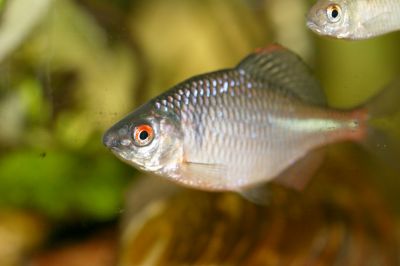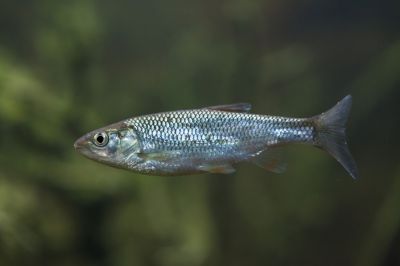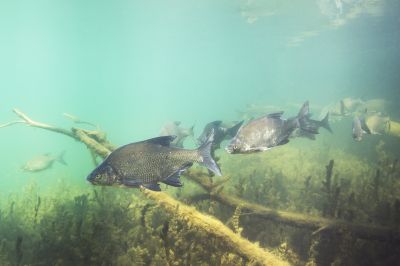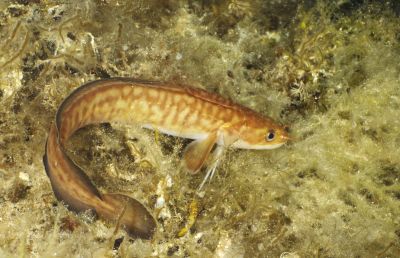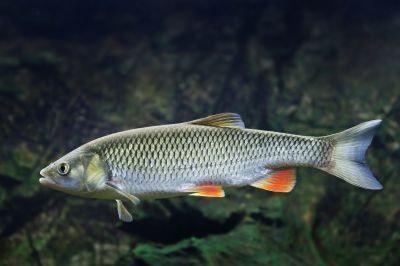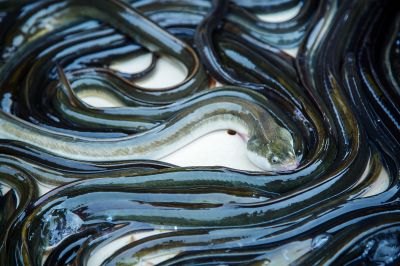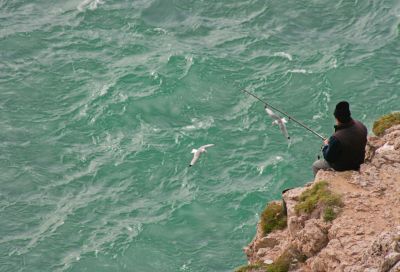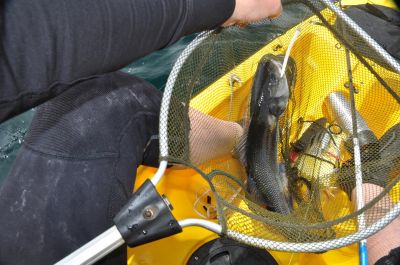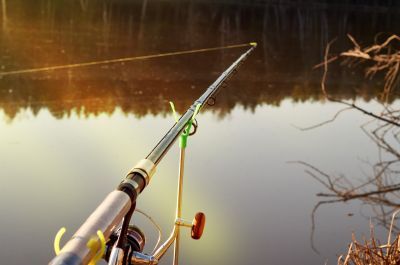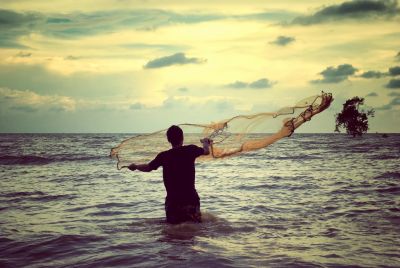Discover everything to fish in Pilgrims Hatch
Find the best moment to go fishing in Pilgrims Hatch, the most caught species, the techniques used, go fish with anglers nearby, find a fishing charter or guide, save your spots and discover new ones.
Go for it!Fishing spots mapDiscover the best fishing spots in Pilgrims Hatch
Fishing in Pilgrims Hatch
What can I fish there ?Join our 1321 fishermen and 8 cofishermen in Pilgrims-Hatch in Essex. The fishing forecast is currently 2.8. The most caught fishes here are the sunbleak fish , the rainbow trout, the rudd fish and the pike fish. Come try the most famous fishing techniques like the where to fish for mullet ? , fishing bass with soft lures, pole feeder fishing or throw fishing for royal bream.

Fishing trips 8 co-anglers currently in Pilgrims Hatch !
8 fishing trips proposals currently in Pilgrims Hatch !
Congratulations, your collaborative fishig profile has been created!

Fishing forecast : go fishing at the best time!
2.5
23h20
Take out your rods!
The fish is there.
Exclusiveness
The fishing forecast
Discover the scientific algorithm that gives you the best moment to go fishing at Pilgrims Hatch !
This is a score calculated according to about forty criteria: moon, weather conditions, atmospheric pressure, tides, swell ...
. Forecast calculated at 4 days

Most caught fish species in Pilgrims Hatch Top species caught by Club members
Top species caught by Club members
N°1 | Barbel Fish
The Barbel fish belongs to the Cyprinids Family. Its maximum weight is 9 kg, and its maximum size is 90 cm but sometimes, it can reach 1 m. It can live 15 years. The Spawning period starts in May and end in July. It can lay up to 9,000 eggs. You can fish Barbel all year. The minimal weight catch is 3 kg. The barbel fish is hard to catch especially in an area where it feels at ease. The Barbel fish, with its streamlined body, shows its perfect adaptation to rivers animated by a more or less rapid stream. Depending on its layout, its color, which may be different, is uniform and slightly lighter on the belly. Barbels are sometimes "grey", sometimes "greenish", and sometimes "golden". Its snout is characteristic and clearly protrudes from its mouth. Note that the dorsal fin has a highly ossified thorny radius.
Fishing period : all year
Minimum size : 3 kg
Difficulty : ![]()
![]()
![]()
![]()
![]()
N°2 | Bitterling Fish
The Bitterling fish is a freshwater fish and belongs to the Cyprinidae family. Its scientific name is Rhodeus Amarus. The current size of the bitterling fish is 5-6 cm. Some individuals can reach a maximum height of 11 cm and a weight of 10 g. This species is one of the smallest Cyprinid in Europe. It lives on average from 2 to 3 years. The spawning period is between April and June. It lays 40 to 100 oocytes. This fish is easy to catch due to its small size. The bitterling is a small fish whose body is high and laterally compressed. The lateral line is short or incomplete. The scales on the back have a grey-green coloring. The sides are clear with silvery reflections. During the breeding period the silver coloration changes to a pink to bright red color with a dark blue sideband. Sexual dimorphism occurs between the male and female during reproduction. A 5 to 8 mm laying tube (ovipositor) develops in the female, which allows her to lay her eggs in the gill cavity of freshwater mussels. The male has a higher body than the female and its colors become brighter during the breeding season. The bitterling fish's eyes are quite large. Its mouth is small, oblique and the upper jaw protrudes beyond the lower jaw. The anal and dorsal fins have a short base and 8 to 10 branched rays.
Fishing period : prohibited all year
Minimum size : not available
Difficulty : ![]()
![]()
![]()
![]()
![]()
N°3 | Bleak Fish
The Bleak fish is a Cyprinidae. In general, its average size is 10 to 15 cm and its weight is 15 to 50 g. However, some individuals can reach up to 60 g for a size of 25 cm. The bleak has a lifespan of 6-7 years. The spawning period is between April and August. It can lay up to 7000 spawns. You can fish bleak from June to September. This fish swims quite fast and offers a little resistance during the catch. The bleak is a fish with an elongated body that is very compressed laterally, allowing it to have a high velocity. The upper jaw is shorter than the lower jaw. The mouth of the bleak is oriented upwards (above), a typical character of fish that seek their food on the surface. The caudal fin is strongly indented and the caudal peduncle is thin. The dorsal fin is inserted behind the pelvic fins and has a shorter base than the dorsal fin. Its name refers to the bright white color of its scales, which gives the bleak a metallic sheen. Its back is darker greenish-blue, its sides are silvery white and its fins are pale grey. During the breeding season, nuptial tubers appear on the backs and sides of males and their fins become orange.
Fishing period : June to September
Minimum size : 10 cm
Difficulty : ![]()
![]()
![]()
![]()
![]()
N°4 | Brown Trout
The Brown Trout belongs to the Salmonidae family. According to the location, the adult size varies from 25 cm to 80 cm for 300 to 800 g. It lives for 3 to 6 years. The spawning period starts in October and end in January. The female can lay up to 4000 eggs. The fishing period is open from the second Saturday of March until the third Sunday of September. This fish is not hard to catch but the fishing needs complex skills. Depending on its environment, the brown trout have a very variable color, but the brown trout, as its name shows, is rather brown with scattered black and red spots, depending on the spawners. It has a certain mimicry according to the bottom of its living spaces since the dominant brown will become a green dress if it lives close to the banks where yellow and even sometimes silvery white will mix. It has a "useless" adipose fin between the dorsal fin and the caudal fin. The head is tapered, strong and has a powerful jaw. Its back is a pretty black or night blue.
Fishing period : March to September
Minimum size : no restriction
Difficulty : ![]()
![]()
![]()
![]()
![]()
N°5 | The Bronze Bream
The Bronze bream belongs to the Cyprinidae Family. The current catch size varies between 30 and 50 cm, for a weight of 0.5 and 2.5 kg. Some individuals can reach a maximum height of 80 cm for a weight of 7 kg. It lives between 20 and 25 years. It reproduces between April and June and lay 100,000 to 300,000 eggs. The Bronze Bream can be fished all year round in 2nd category streams and is not hard to catch with the right bait. In Europe, there are 2 or 3 types of bream, 5 species and 2 subspecies. The Bronze bream has a very high and strong body flattened laterally. The bushy back, especially in older individuals, is characteristic of this fish. Its body is covered with large scales and mucus. The Bronze bream has a fairly small eye compared to the size of the muzzle. The mouth is small, oblique, barbless and protractile. The upper jaw protrudes beyond the lower jaw. Teeth are subject to seasonal replacement. The anal fin is very long and has 23-30 soft rays. On the other hand, the dorsal fin is short and inserted behind the pelvic fins. The caudal fin is very indented with the lower lobe longer than the upper lobe.
Fishing period : All year
Minimum size : 30 cm
Difficulty : ![]()
![]()
![]()
![]()
![]()
N°6 | The Bullhead fish
The Bullhead fish belongs to the Ictaluridae family. This species generally measures 15 to 20 cm, but can reach a maximum of 45 cm for a weight of 2 kg. It can live up to 6 years. It breeds in May-June and lays up to 5000 eggs. It can be fished all year. It is a scaleless fish with bare, viscous skin. Its naked body is elongated and has thousands of sensory cells (electro-receptor cells) that are a particular feature of the species. He has a large flattened head, a very wide mouth with large lips and 8 barbels, 6 of which hang, and 2 are located behind the nostrils. Its pectoral fins have sharp spines that are dangerous. Similarly, its first dorsal fin has a sharp sting. It also has a short fat fin (between the dorsal and caudal fins). Its brown back is almost black or greenish brown, its sides lighter, its belly yellowish white.
Fishing period : All year
Minimum size : 20 cm
Difficulty : ![]()
![]()
![]()
![]()
![]()
N°7 | The Burbot
The Burbot fish belongs to the Lotidae family. The burbot can measure 30 to 120 cm and weigh up to 3 kg. It can live from 15 to 20 years. It breeds from December to March and can lay up to one million eggs. It can be fished all year round. The body is cylindrical, elongated, slightly compressed towards the tail, covered with small scales covered with a thick layer of mucus. The back is greenish brown or yellowish with darker mottling, with a gradation becoming lighter on the sides. The belly is yellowish white. The short, rounded pectoral fins, close to the head, overhang the ventral side with their first very elongated radius. The first dorsal fin is short, the second, very long, continues until the birth of the caudal, which is rounded. The lower jaw has a single long barbel and the nostrils have two fairly distant orifices, each with a small barbel. The mouth is wide, with many fine teeth.
Fishing period : All year
Minimum size : 50 cm
Difficulty : ![]()
![]()
![]()
![]()
![]()
N°8 | The Chub fish
The chub fish belongs to the family of Cyprinidae. The common catch size of the chub fish varies from 15 to 30 cm, but it can reach 80 cm for a weight of 8 kg. The longevity is estimated at about ten years. The reproduction of the chub takes place between April and June. The female lays 20,000 to 100,000 eggs. It can be fished from July to Mars. The body is long and cylindrical with a terminal mouth, pointing upwards, with large lips. The big head has a flat forehead. The large, black-edged scales give it a reticulated appearance. The anal fin has a convex rear edge. The back and upper part of the head are greyish-green to brown in color; the flanks have silvery or even golden highlights; the belly is whitish. The fins are grey except for the bellies and the pale red anal fin.
Fishing period : From July to February
Minimum size : 15 cm
Difficulty : ![]()
![]()
![]()
![]()
![]()
N°9 | The Common Carp
The Common Carp belongs to the Cyprinidae family. Its average size is 40 to 60 cm (up to 1 meter for some specimens) with an average weight of 6 to 8 kilos (up to 37 kilos for some specimens). It can live up to 20 years in the wild. Common carp breed from spring to summer. The female lays 250,000 eggs per kg of weight. Carp can be fished all year round in the 2nd category rivers! It is a massive fish, green in color (except the koi). Its head is conical, its mouth is protractile, it has no teeth but has 2 pairs of barbels. Its growth is fast; it exceeds one kilo in 3 years. The fins are strong and grey, except for the pelvic and anal fins, which are slightly orange.
Fishing period : All year
Minimum size : 40 cm
Difficulty : ![]()
![]()
![]()
![]()
![]()
N°10 | The Crucian Carp
The Crucian Carp belongs to the Cyprinidae family. Its average size is 45 cm for 3 kg. It can live up to 15 years. It breeds from Mai to June. The female lays up to 300,000 oocytes. It can be fished from spring to fall. The Crucian carp is ovoid, stocky and laterally compressed. The protruding back gives it a high body. The most common specimens have an average size of 15 cm and a weight of about 250 g, but they can reach more than 50 cm and a weight of 4 kg. The head, small and conical, has no barbels. The pectoral and ventral fins and the anus are slightly rounded and have a reddish colour. The dorsal fin is characterized by a convex line. Finally, the caudal is slightly indented, and has 20 soft rays. Large scales cover the body and 31 to 36 scales run along the lateral line. Overall, it is greenish in color, dark on the back, with golden reflections on the sides and lighter on the belly. A black spot at the base of the caudal fin characterizes juveniles of this species. This stain disappears with age.
Fishing period : Spring to fall
Minimum size : 30 cm
Difficulty : ![]()
![]()
![]()
![]()
![]()
N°11 | The Dace Fish
The Dace fish belongs to the Cyprinidae Family. The current size of the dace fish varies between 15 and 20 cm and weighs between 100 and 200 g. However, it can reach a maximum size of 40 cm for a weight of about 1 kg. The life span is usually 10 to 12 years, but it can reach 15 years. The breeding period is from March-April to May-June, depending on latitude. The female's fertility rate is 8,000 to 10,000 oocytes. The dace’s fishing season is open from June to March. This fish has a slender and streamlined body. The head is conical with a small and slightly split mouth, slightly inferior. The eyes are bordered with yellow. Fins are well developed. The caudal is indented, the dorsal fin is grey with 10-11 rays, located in the middle of the back. Pelvic bones are yellow with a concave posterior edge, anal and pectoral fins yellowish to orange. This species is suitable for rapid swimming in rough water. The scales are large (47 to 55 along the lateral line), silver-colored on the sides, greyer and greener dorsally, and white ventrally.
Fishing period : June to March
Minimum size : 15 cm
Difficulty : ![]()
![]()
![]()
![]()
![]()
N°12 | The Eel fish
The Eel fish belongs to the Anguillidae family. The eel can measure up to 1.50 m in length for 4 kg, but the average size is between 40 and 60 cm. They can live up to 50 years old. They reproduce in March. They can be fished from April to September. The eel is a species of snake fish, hence its Latin name "anguis" which means snake. Its anterior part is circular while the caudal section is flattened. Its body is covered with smooth skin and enriched with mucus. The scales only appear late. The eyes of an eel are round. It has a terminal mouth with a prominent jaw. Without pelvic fins, the eel has only small pectoral fins and long dorsal, anal and caudal fins. These meet at the level of the tail.
Fishing period : April to September
Minimum size : 50 cm
Difficulty : ![]()
![]()
![]()
![]()
![]()
N°1 | Barbel Fish
The Barbel fish belongs to the Cyprinids Family. Its maximum weight is 9 kg, and its maximum size is 90 cm but sometimes, it can reach 1 m. It can live 15 years. The Spawning period starts in May and end in July. It can lay up to 9,000 eggs. You can fish Barbel all year. The minimal weight catch is 3 kg. The barbel fish is hard to catch especially in an area where it feels at ease. The Barbel fish, with its streamlined body, shows its perfect adaptation to rivers animated by a more or less rapid stream. Depending on its layout, its color, which may be different, is uniform and slightly lighter on the belly. Barbels are sometimes "grey", sometimes "greenish", and sometimes "golden". Its snout is characteristic and clearly protrudes from its mouth. Note that the dorsal fin has a highly ossified thorny radius.
Fishing period : all year
Minimum size : 3 kg
Difficulty : ![]()
![]()
![]()
![]()
![]()
N°2 | Bitterling Fish
The Bitterling fish is a freshwater fish and belongs to the Cyprinidae family. Its scientific name is Rhodeus Amarus. The current size of the bitterling fish is 5-6 cm. Some individuals can reach a maximum height of 11 cm and a weight of 10 g. This species is one of the smallest Cyprinid in Europe. It lives on average from 2 to 3 years. The spawning period is between April and June. It lays 40 to 100 oocytes. This fish is easy to catch due to its small size. The bitterling is a small fish whose body is high and laterally compressed. The lateral line is short or incomplete. The scales on the back have a grey-green coloring. The sides are clear with silvery reflections. During the breeding period the silver coloration changes to a pink to bright red color with a dark blue sideband. Sexual dimorphism occurs between the male and female during reproduction. A 5 to 8 mm laying tube (ovipositor) develops in the female, which allows her to lay her eggs in the gill cavity of freshwater mussels. The male has a higher body than the female and its colors become brighter during the breeding season. The bitterling fish's eyes are quite large. Its mouth is small, oblique and the upper jaw protrudes beyond the lower jaw. The anal and dorsal fins have a short base and 8 to 10 branched rays.
Fishing period : prohibited all year
Minimum size : not available
Difficulty : ![]()
![]()
![]()
![]()
![]()
N°3 | Bleak Fish
The Bleak fish is a Cyprinidae. In general, its average size is 10 to 15 cm and its weight is 15 to 50 g. However, some individuals can reach up to 60 g for a size of 25 cm. The bleak has a lifespan of 6-7 years. The spawning period is between April and August. It can lay up to 7000 spawns. You can fish bleak from June to September. This fish swims quite fast and offers a little resistance during the catch. The bleak is a fish with an elongated body that is very compressed laterally, allowing it to have a high velocity. The upper jaw is shorter than the lower jaw. The mouth of the bleak is oriented upwards (above), a typical character of fish that seek their food on the surface. The caudal fin is strongly indented and the caudal peduncle is thin. The dorsal fin is inserted behind the pelvic fins and has a shorter base than the dorsal fin. Its name refers to the bright white color of its scales, which gives the bleak a metallic sheen. Its back is darker greenish-blue, its sides are silvery white and its fins are pale grey. During the breeding season, nuptial tubers appear on the backs and sides of males and their fins become orange.
Fishing period : June to September
Minimum size : 10 cm
Difficulty : ![]()
![]()
![]()
![]()
![]()
N°4 | Brown Trout
The Brown Trout belongs to the Salmonidae family. According to the location, the adult size varies from 25 cm to 80 cm for 300 to 800 g. It lives for 3 to 6 years. The spawning period starts in October and end in January. The female can lay up to 4000 eggs. The fishing period is open from the second Saturday of March until the third Sunday of September. This fish is not hard to catch but the fishing needs complex skills. Depending on its environment, the brown trout have a very variable color, but the brown trout, as its name shows, is rather brown with scattered black and red spots, depending on the spawners. It has a certain mimicry according to the bottom of its living spaces since the dominant brown will become a green dress if it lives close to the banks where yellow and even sometimes silvery white will mix. It has a "useless" adipose fin between the dorsal fin and the caudal fin. The head is tapered, strong and has a powerful jaw. Its back is a pretty black or night blue.
Fishing period : March to September
Minimum size : no restriction
Difficulty : ![]()
![]()
![]()
![]()
![]()
N°5 | The Bronze Bream
The Bronze bream belongs to the Cyprinidae Family. The current catch size varies between 30 and 50 cm, for a weight of 0.5 and 2.5 kg. Some individuals can reach a maximum height of 80 cm for a weight of 7 kg. It lives between 20 and 25 years. It reproduces between April and June and lay 100,000 to 300,000 eggs. The Bronze Bream can be fished all year round in 2nd category streams and is not hard to catch with the right bait. In Europe, there are 2 or 3 types of bream, 5 species and 2 subspecies. The Bronze bream has a very high and strong body flattened laterally. The bushy back, especially in older individuals, is characteristic of this fish. Its body is covered with large scales and mucus. The Bronze bream has a fairly small eye compared to the size of the muzzle. The mouth is small, oblique, barbless and protractile. The upper jaw protrudes beyond the lower jaw. Teeth are subject to seasonal replacement. The anal fin is very long and has 23-30 soft rays. On the other hand, the dorsal fin is short and inserted behind the pelvic fins. The caudal fin is very indented with the lower lobe longer than the upper lobe.
Fishing period : All year
Minimum size : 30 cm
Difficulty : ![]()
![]()
![]()
![]()
![]()
N°6 | The Bullhead fish
The Bullhead fish belongs to the Ictaluridae family. This species generally measures 15 to 20 cm, but can reach a maximum of 45 cm for a weight of 2 kg. It can live up to 6 years. It breeds in May-June and lays up to 5000 eggs. It can be fished all year. It is a scaleless fish with bare, viscous skin. Its naked body is elongated and has thousands of sensory cells (electro-receptor cells) that are a particular feature of the species. He has a large flattened head, a very wide mouth with large lips and 8 barbels, 6 of which hang, and 2 are located behind the nostrils. Its pectoral fins have sharp spines that are dangerous. Similarly, its first dorsal fin has a sharp sting. It also has a short fat fin (between the dorsal and caudal fins). Its brown back is almost black or greenish brown, its sides lighter, its belly yellowish white.
Fishing period : All year
Minimum size : 20 cm
Difficulty : ![]()
![]()
![]()
![]()
![]()
N°7 | The Burbot
The Burbot fish belongs to the Lotidae family. The burbot can measure 30 to 120 cm and weigh up to 3 kg. It can live from 15 to 20 years. It breeds from December to March and can lay up to one million eggs. It can be fished all year round. The body is cylindrical, elongated, slightly compressed towards the tail, covered with small scales covered with a thick layer of mucus. The back is greenish brown or yellowish with darker mottling, with a gradation becoming lighter on the sides. The belly is yellowish white. The short, rounded pectoral fins, close to the head, overhang the ventral side with their first very elongated radius. The first dorsal fin is short, the second, very long, continues until the birth of the caudal, which is rounded. The lower jaw has a single long barbel and the nostrils have two fairly distant orifices, each with a small barbel. The mouth is wide, with many fine teeth.
Fishing period : All year
Minimum size : 50 cm
Difficulty : ![]()
![]()
![]()
![]()
![]()
N°8 | The Chub fish
The chub fish belongs to the family of Cyprinidae. The common catch size of the chub fish varies from 15 to 30 cm, but it can reach 80 cm for a weight of 8 kg. The longevity is estimated at about ten years. The reproduction of the chub takes place between April and June. The female lays 20,000 to 100,000 eggs. It can be fished from July to Mars. The body is long and cylindrical with a terminal mouth, pointing upwards, with large lips. The big head has a flat forehead. The large, black-edged scales give it a reticulated appearance. The anal fin has a convex rear edge. The back and upper part of the head are greyish-green to brown in color; the flanks have silvery or even golden highlights; the belly is whitish. The fins are grey except for the bellies and the pale red anal fin.
Fishing period : From July to February
Minimum size : 15 cm
Difficulty : ![]()
![]()
![]()
![]()
![]()
N°9 | The Common Carp
The Common Carp belongs to the Cyprinidae family. Its average size is 40 to 60 cm (up to 1 meter for some specimens) with an average weight of 6 to 8 kilos (up to 37 kilos for some specimens). It can live up to 20 years in the wild. Common carp breed from spring to summer. The female lays 250,000 eggs per kg of weight. Carp can be fished all year round in the 2nd category rivers! It is a massive fish, green in color (except the koi). Its head is conical, its mouth is protractile, it has no teeth but has 2 pairs of barbels. Its growth is fast; it exceeds one kilo in 3 years. The fins are strong and grey, except for the pelvic and anal fins, which are slightly orange.
Fishing period : All year
Minimum size : 40 cm
Difficulty : ![]()
![]()
![]()
![]()
![]()
N°10 | The Crucian Carp
The Crucian Carp belongs to the Cyprinidae family. Its average size is 45 cm for 3 kg. It can live up to 15 years. It breeds from Mai to June. The female lays up to 300,000 oocytes. It can be fished from spring to fall. The Crucian carp is ovoid, stocky and laterally compressed. The protruding back gives it a high body. The most common specimens have an average size of 15 cm and a weight of about 250 g, but they can reach more than 50 cm and a weight of 4 kg. The head, small and conical, has no barbels. The pectoral and ventral fins and the anus are slightly rounded and have a reddish colour. The dorsal fin is characterized by a convex line. Finally, the caudal is slightly indented, and has 20 soft rays. Large scales cover the body and 31 to 36 scales run along the lateral line. Overall, it is greenish in color, dark on the back, with golden reflections on the sides and lighter on the belly. A black spot at the base of the caudal fin characterizes juveniles of this species. This stain disappears with age.
Fishing period : Spring to fall
Minimum size : 30 cm
Difficulty : ![]()
![]()
![]()
![]()
![]()
N°11 | The Dace Fish
The Dace fish belongs to the Cyprinidae Family. The current size of the dace fish varies between 15 and 20 cm and weighs between 100 and 200 g. However, it can reach a maximum size of 40 cm for a weight of about 1 kg. The life span is usually 10 to 12 years, but it can reach 15 years. The breeding period is from March-April to May-June, depending on latitude. The female's fertility rate is 8,000 to 10,000 oocytes. The dace’s fishing season is open from June to March. This fish has a slender and streamlined body. The head is conical with a small and slightly split mouth, slightly inferior. The eyes are bordered with yellow. Fins are well developed. The caudal is indented, the dorsal fin is grey with 10-11 rays, located in the middle of the back. Pelvic bones are yellow with a concave posterior edge, anal and pectoral fins yellowish to orange. This species is suitable for rapid swimming in rough water. The scales are large (47 to 55 along the lateral line), silver-colored on the sides, greyer and greener dorsally, and white ventrally.
Fishing period : June to March
Minimum size : 15 cm
Difficulty : ![]()
![]()
![]()
![]()
![]()
N°12 | The Eel fish
The Eel fish belongs to the Anguillidae family. The eel can measure up to 1.50 m in length for 4 kg, but the average size is between 40 and 60 cm. They can live up to 50 years old. They reproduce in March. They can be fished from April to September. The eel is a species of snake fish, hence its Latin name "anguis" which means snake. Its anterior part is circular while the caudal section is flattened. Its body is covered with smooth skin and enriched with mucus. The scales only appear late. The eyes of an eel are round. It has a terminal mouth with a prominent jaw. Without pelvic fins, the eel has only small pectoral fins and long dorsal, anal and caudal fins. These meet at the level of the tail.
Fishing period : April to September
Minimum size : 50 cm
Difficulty : ![]()
![]()
![]()
![]()
![]()

Pilgrims Hatch - Fishing techniques Top fishing techniques
Top fishing techniques
N°1 | Where to fish for mullet ?
To know where to fish for mullet and what techniques are adapted to each morphology of the fishing site, consult this article. The mullet is a very suspicious fish but incredibly fun to catch. Discover or rediscover the techniques used to fish for mullet.
N°2 | Fishing bass with soft lures
Drift Fishing with soft lure. Bass are fond of places where they can watch for their prey in the rocks. The biotopes developed in these structures (shallows, drop offs, wrecks...) are rich and attract wildlife from which the bass feeds itself. Soft lures are not themselves equipped with hooks but are designed to be mounted on a lead head that has a hook. The hook is above the lure, so when the lure hits the bottom, the hook does not stick. The originality and structure of these lures make them ideal for fishing in hard-to-reach areas. Where hard lures and traditional mounts fail to catch, the soft lure considerably reduces the risk of loss and allows fishing as close as possible to interesting rocks. The soft lure is mainly used for drifting. It is a question of passing over the spot by passing the lure as close as possible to the structures. So you have to be able to feel what is happening at the end of the line at any time to avoid trouble. Once the lure is at the bottom, it must be animated by pulling with the rod tip. Alternate between large, wide movements by gently descending, always in contact with the lure, and other smaller, more jerky movements that could decide which bar to attack. Whatever the techniques used, you should never hesitate to question yourself and change your spot, lure or technique if the fish does not bite.
N°3 | Pole feeder fishing
Fishing with the Pole Feeder or Fishing with the big stick, another technique that comes from England. It seems that the origin of this technique came from a dilemma between fishing with a big rod (Pole Fishing in English) and fishing with a cage feeder (Feeder Fishing in English); the solution to this dilemma was therefore the Pole Feeder Fishing. The idea is very simple: use feeder cages with a large cane; strange as an idea but very effective especially in rivers and canals.
N°4 | Throw fishing for royal bream
Throw Fishing consists in throwing your line offshore or into estuaries, coastal ponds or harbors from rocks or from an artificial structure (dock, dike, hold, jetty...). In order to fish for sea bream, stable weather remains more appropriate because, despite everything, sea bream do not appreciate turbulence and tend, in bad weather, to find refuge towards the bottom. A very active species during the day, it is usually one hour after and before sunset that the hits are more frequent! When it comes to fishing for sea bream, sliding fixtures are the most effective. Indeed, the slightest suspicious tension when taking the bait makes the bream flee. A sliding assembly allows the bream to leave with the hook without feeling any resistance. As this fish is particularly fearful, a slider lead assembly or the use of stacks above the lead seems to be the most appropriate. Once you see the tip of the rod moving, if the key is straightforward, you must press immediately, otherwise it is better to wait until the key is confirmed (usually the sea bream drops once, spits out the bait and if it does not detect anything suspicious, returns more frankly). It is therefore necessary to be extremely vigilant at the slightest touch.
N°5 | Angling squid with sardine
If there is a bait that squid can't resist, it's sardine! This cephalopod is fond of this dish; it doesn't hesitate to literally rush on it. So, let's not deprive ourselves of this ancestral trick to capture the squid that could well avoid some other lures.
N°6 | Slabbing the bass
Intrigued and attracted by vibrations, the bass rarely resists the technique of slabbing. Subjugated by noise, shapes and colors: lures are extremely effective on this famous predator. This very active fishing consists, as its name suggests, in constantly launching and bringing back lures to deceive its prey while exploring the different heights of the water column. It requires a solid knowledge of the subject and equipment that is just as reliable!
N°1 | Where to fish for mullet ?
To know where to fish for mullet and what techniques are adapted to each morphology of the fishing site, consult this article. The mullet is a very suspicious fish but incredibly fun to catch. Discover or rediscover the techniques used to fish for mullet.
N°2 | Fishing bass with soft lures
Drift Fishing with soft lure. Bass are fond of places where they can watch for their prey in the rocks. The biotopes developed in these structures (shallows, drop offs, wrecks...) are rich and attract wildlife from which the bass feeds itself. Soft lures are not themselves equipped with hooks but are designed to be mounted on a lead head that has a hook. The hook is above the lure, so when the lure hits the bottom, the hook does not stick. The originality and structure of these lures make them ideal for fishing in hard-to-reach areas. Where hard lures and traditional mounts fail to catch, the soft lure considerably reduces the risk of loss and allows fishing as close as possible to interesting rocks. The soft lure is mainly used for drifting. It is a question of passing over the spot by passing the lure as close as possible to the structures. So you have to be able to feel what is happening at the end of the line at any time to avoid trouble. Once the lure is at the bottom, it must be animated by pulling with the rod tip. Alternate between large, wide movements by gently descending, always in contact with the lure, and other smaller, more jerky movements that could decide which bar to attack. Whatever the techniques used, you should never hesitate to question yourself and change your spot, lure or technique if the fish does not bite.
N°3 | Pole feeder fishing
Fishing with the Pole Feeder or Fishing with the big stick, another technique that comes from England. It seems that the origin of this technique came from a dilemma between fishing with a big rod (Pole Fishing in English) and fishing with a cage feeder (Feeder Fishing in English); the solution to this dilemma was therefore the Pole Feeder Fishing. The idea is very simple: use feeder cages with a large cane; strange as an idea but very effective especially in rivers and canals.
N°4 | Throw fishing for royal bream
Throw Fishing consists in throwing your line offshore or into estuaries, coastal ponds or harbors from rocks or from an artificial structure (dock, dike, hold, jetty...). In order to fish for sea bream, stable weather remains more appropriate because, despite everything, sea bream do not appreciate turbulence and tend, in bad weather, to find refuge towards the bottom. A very active species during the day, it is usually one hour after and before sunset that the hits are more frequent! When it comes to fishing for sea bream, sliding fixtures are the most effective. Indeed, the slightest suspicious tension when taking the bait makes the bream flee. A sliding assembly allows the bream to leave with the hook without feeling any resistance. As this fish is particularly fearful, a slider lead assembly or the use of stacks above the lead seems to be the most appropriate. Once you see the tip of the rod moving, if the key is straightforward, you must press immediately, otherwise it is better to wait until the key is confirmed (usually the sea bream drops once, spits out the bait and if it does not detect anything suspicious, returns more frankly). It is therefore necessary to be extremely vigilant at the slightest touch.
N°5 | Angling squid with sardine
If there is a bait that squid can't resist, it's sardine! This cephalopod is fond of this dish; it doesn't hesitate to literally rush on it. So, let's not deprive ourselves of this ancestral trick to capture the squid that could well avoid some other lures.
N°6 | Slabbing the bass
Intrigued and attracted by vibrations, the bass rarely resists the technique of slabbing. Subjugated by noise, shapes and colors: lures are extremely effective on this famous predator. This very active fishing consists, as its name suggests, in constantly launching and bringing back lures to deceive its prey while exploring the different heights of the water column. It requires a solid knowledge of the subject and equipment that is just as reliable!
Fishing near Pilgrims Hatch
Post
A catch
Save a catch to start your fishing logbook. You will be able to to share it with the community if yo want!
A fishing trip
Post an ad to go fishing with other fishermen
A message
Share a thought, a question with the community







